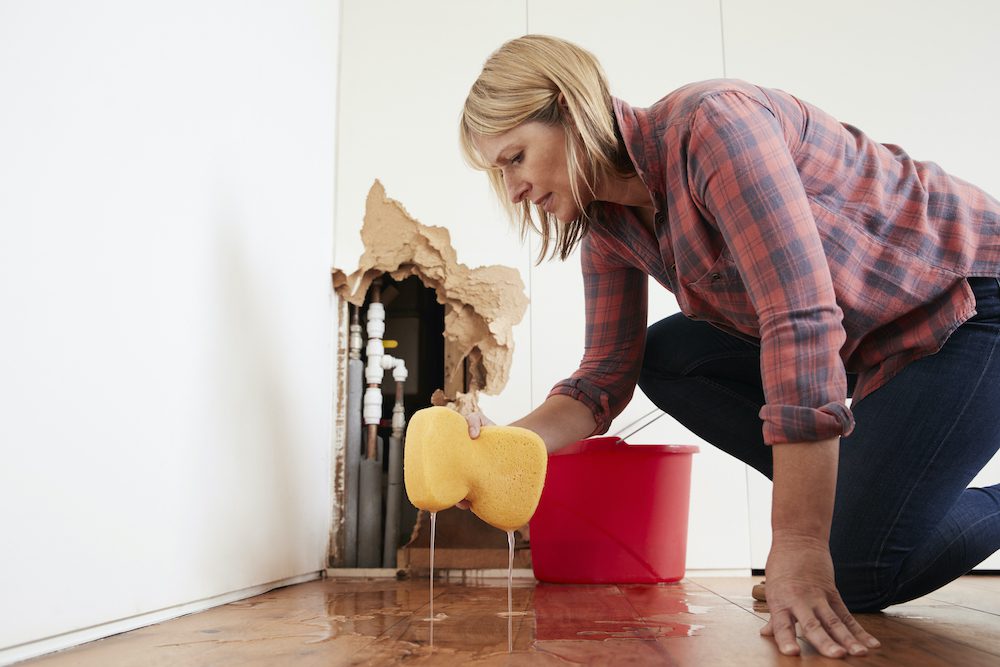They are making a few great pointers on the subject of Locating water leaks in general in the article further down.

Early discovery of dripping water lines can mitigate a prospective calamity. In addition to conserving you cash, it will certainly decrease the worry and aggravation. The moment you locate a leak, calling your plumber for repairs is the very best remedy. Some tiny water leakages might not be visible. If you can not discover it with your naked eyes, here are some hacks that aid.
1. Examine the Water Meter
Examining it is a proven method that assists you discover leaks. If it relocates, that suggests a fast-moving leak. This means you might have a sluggish leak that could also be below ground.
2. Inspect Water Consumption
Analyze your water expenses and track your water intake. As the one paying it, you must notice if there are any kind of inconsistencies. If you spot sudden changes, regardless of your consumption coinciding, it implies that you have leakages in your plumbing system. Keep in mind, your water costs ought to drop under the same variety monthly. An abrupt spike in your bill suggests a fast-moving leakage.
At the same time, a steady increase monthly, despite the exact same habits, reveals you have a slow leak that's likewise slowly rising. Call a plumber to completely inspect your home, especially if you feel a warm area on your flooring with piping underneath.
3. Do a Food Coloring Examination
When it comes to water consumption, 30% comes from commodes. If the shade in some way infiltrates your bowl throughout that time without flushing, there's a leakage in between the storage tank as well as bowl.
4. Asses Exterior Lines
Do not forget to check your outdoor water lines also. Ought to water permeate out of the connection, you have a loose rubber gasket. One little leak can lose tons of water and surge your water bill.
5. Examine the situation as well as inspect
Homeowners ought to make it a behavior to check under the sink counters as well as also inside closets for any bad odor or mold development. These 2 warnings indicate a leak so punctual focus is required. Doing routine inspections, even bi-annually, can conserve you from a significant problem.
Inspect for discolorations and also compromising as most pipes and also home appliances have a life expectancy. If you believe dripping water lines in your plumbing system, do not wait for it to escalate.
Early detection of dripping water lines can minimize a potential catastrophe. Some small water leaks may not be visible. Inspecting it is a proven means that helps you discover leaks. One little leakage can waste lots of water as well as surge your water expense.
If you presume dripping water lines in your plumbing system, don't wait for it to intensify.
WARNING SIGNS OF WATER LEAKAGE BEHIND THE WALL
PERSISTENT MUSTY ODORS
As water slowly drips from a leaky pipe inside the wall, flooring and sheetrock stay damp and develop an odor similar to wet cardboard. It generates a musty smell that can help you find hidden leaks.
MOLD IN UNUSUAL AREAS
Mold usually grows in wet areas like kitchens, baths and laundry rooms. If you spot the stuff on walls or baseboards in other rooms of the house, it’s a good indicator of undetected water leaks.
STAINS THAT GROW
When mold thrives around a leaky pipe, it sometimes takes hold on the inside surface of the affected wall. A growing stain on otherwise clean sheetrock is often your sign of a hidden plumbing problem.
PEELING OR BUBBLING WALLPAPER / PAINT
This clue is easy to miss in rooms that don’t get much use. When you see wallpaper separating along seams or paint bubbling or flaking off the wall, blame sheetrock that stays wet because of an undetected leak.
BUCKLED CEILINGS AND STAINED FLOORS
If ceilings or floors in bathrooms, kitchens or laundry areas develop structural problems, don’t rule out constant damp inside the walls. Wet sheetrock can affect adjacent framing, flooring and ceilings.
https://www.servicemasterbyzaba.com/blog/how-to-detect-water-leakage-in-walls/

Hopefully you enjoyed reading our topic on Detecting hidden plumbing leaks. Many thanks for taking a few minutes to browse our content. Remember to take the time to promote this blog posting if you liked it. Thank you for your time. Visit again soon.